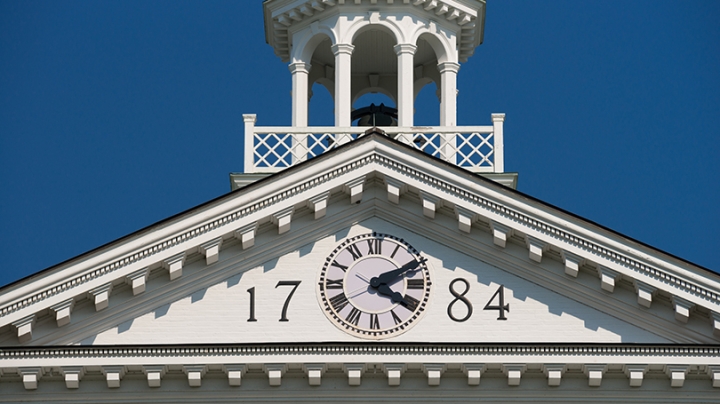A task force will soon begin work to explore the opportunities and challenges of increasing the size of the undergraduate student body as a way for Dartmouth to have a greater impact in the world and to increase flexibility in shaping incoming classes.
In his annual address last fall to the Faculty of Arts and Sciences, President Phil Hanlon ’77 said that investigating an increase in enrollment is one of the strategic issues facing the College.
“The most compelling reason to contemplate growth is that Dartmouth aspires to better the world by preparing graduates who have the skills and ambitions to go out and change the world. A larger student body would lead to more graduates, which would amplify our impact on the world,” says President Hanlon.
The investigation is just that, says Hanlon, a chance to study the pros and cons of growth and consider the potential effect of growth on the institution. “We’ve not made a decision, far from it,” says Hanlon. “We want to take a look at facts and see what we can learn from them.”
Before any decision is made, the College will seek comment from all members of the Dartmouth community. The task force will present an initial report to Hanlon, Provost Carolyn Dever, and Executive Vice President Rick Mills by the end of October, with a final report due in mid-March.
With its 4,310 undergraduates, Dartmouth has the smallest number of undergraduates in the Ivy League. The small size makes it more challenging for the College to enroll a new class that represents interest in a variety of academic disciplines and activities outside the classroom and come from diverse backgrounds. The task force is charged with developing a hypothetical implementation plan that considers undergraduate student body growth of between 10 percent and 25 percent.
Over 15 years, ending in 2015, the percentage growth in the undergraduate student body has seen double-digit increases for three of the eight Ivy League schools, according to U.S. Department of Education figures. Dartmouth’s growth was 4 percent over that time; Dartmouth had the smallest undergraduate student body over the 15-year period. Yale is in the midst of significant undergraduate growth, expecting to increase the size of incoming classes by about 15 percent over four years.

A number of Dartmouth departments have advocated for greater representation in incoming classes, and there have been requests to admit more international students and students from a wide range of backgrounds and with differing interests outside the classroom.
The task force’s charge includes the requirement that any potential growth plan must at least break even financially. As the task force develops a plan, it will look for ways to maintain or enhance the quality of the educational experience for all undergraduates. The group will also consider whether there are economies of scale to be achieved—ways of more efficient operation that could be realized by increasing the number of students.
One thing that won’t change, says Hanlon, is the unique access students have to faculty and the ability to do research with these remarkable scholars. “We pride ourselves on the bonds that are established between members of our community and we’re not going to alter this hallmark of the Dartmouth experience,” he says.
Dean of the Faculty of Arts and Sciences Elizabeth Smith and Dean of the College Rebecca Biron will chair the task force. Its other members are Dave Hodgson ’78, a College trustee; James Feyrer, an associate professor of economics; Mark McPeek, a professor of biological sciences; Reiko Ohnuma, a professor of religion; Scott Pauls, a professor of mathematics; and Andrea Tarnowski, an associate professor of French and comparative literature.


